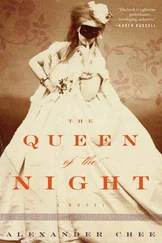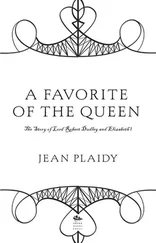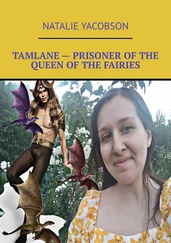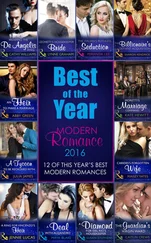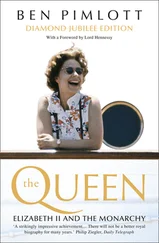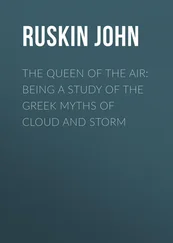When Elizabeth turned sixteen, her parents hired Marie-Antoinette de Bellaigue, a sophisticated Belgian vicomtesse educated in Paris, to teach French literature and history. Called “Toni” by the two princesses, she set a high standard and compelled them to speak French with her during meals. Elizabeth developed a fluency that impressed even Parisians, who praised her for speaking with “cool clear precision” on her visit to their city in 1948, at age twenty-two.
De Bellaigue worked in tandem with Marten, who suggested essay topics for Elizabeth to write in French. The governess later recounted that Marten had taught the future Queen “to appraise both sides of a question, thus using [her] judgment.” In de Bellaigue’s view, Lilibet “had from the beginning a positive good judgment. She had an instinct for the right thing. She was her simple self, ‘très naturelle.’ And there was always a strong sense of duty mixed with joie de vivre in the pattern of her character.”
Elizabeth’s mother had an enormous influence on the development of her character and personality. Born Elizabeth Bowes Lyon to the Earl and Countess of Strathmore, she had grown up in an aristocratic Scottish-English family of nine children. In 1929, Time magazine had pronounced her a “fresh, buxom altogether ‘jolly’ little duchess.” She read widely and avidly, with a particular fondness for P. G. Wodehouse. Somewhat improbably, she was also a fan of Damon Runyon’s stories about New York gangsters and molls, once writing to a friend in the author’s vernacular: “The way that Dame Pearl gets a ripple on, there was a baby for you—Oh boy.”
Queen Elizabeth taught her daughter to read at age five and devoted considerable time to reading aloud the children’s classics. As soon as Lilibet could write, her mother encouraged her to begin the lifelong habit of recording her impressions in a diary each night. During her father’s coronation in 1937, the eleven-year-old princess kept a lively journal, “From Lilibet by Herself .” “The arches and beams at the top [of Westminster Abbey] were covered with a sort of haze of wonder as Papa was crowned,” she wrote. When her mother was crowned and the white-gloved peeresses put on their coronets simultaneously, “it looked wonderful to see arms and coronets hovering in the air and then the arms disappear as if by magic.”
AT AN EARLY AGE, Elizabeth’s parents began arranging for her to sit for portraits. She would repeat this ritual more than 140 times throughout her life, making her the most painted monarch in history. For the royal family, portraits have long been an essential part of image making, helping to shape the way the public sees its regal icons. When asked if she kept her portraits, the Queen replied, “No, none. They’re all painted for other people.”
Hungarian Alexius de László, a widely admired society portrait artist, was hired to capture Lilibet in oils for the first time. She was just seven. László found her to be “intelligent and full of character,” although he conceded she was “very sleepy and restless.” Aristocratic matrons enjoyed the company of the smooth-talking sixty-four-year-old artist, but Elizabeth thought he was “horrid,” as she recalled years later with a grimace. “He was one of those people who wanted you to sit permanently looking at you.” The resulting ethereal image—a favorite of her mother’s—shows the young princess in ruffled silk, with blond curls and wide blue eyes, holding a basket of flowers. Yet her unsmiling expression betrays a whiff of exasperation.
The second artist to capture Elizabeth’s image was another Hungarian, sculptor Zsigmond Strobl, who had eighteen sessions with her from 1936 to 1938. She was older, by then the heiress presumptive, and eager to chat with the Hungarian journalist who joined the sittings to help her pass the time in conversation. Being painted or sculpted from life reinforced the virtue of patience. As Queen she would also find her sittings to be an oasis of uncluttered time when she could unwind, connect with a stranger in a private and unthreatening way, speak expansively—sometimes quite personally—and even crack jokes. “It’s quite nice,” she said during a sitting before her eightieth birthday as she flashed an impish smile. “Usually one just sits, and people can’t get at you because one’s busy doing nothing.”
A favorite topic during the Strobl sculpting sessions was the world of horses, which had become Elizabeth’s full-blown passion as well as another opportunity for learning. Her father bred and raced thoroughbreds, continuing a royal tradition, and he introduced her to all aspects of the equine world, starting with her first riding lesson at age three. By 1938 she began learning how to ride sidesaddle, a necessary skill for the yearly Trooping the Colour ceremony celebrating the sovereign’s birthday when she would be required to ride in a red military tunic, long navy blue riding skirt, and black tricorn cap at the head of a parade of more than 1,400 soldiers.
Her twice weekly riding lessons helped her develop athleticism and strength and taught her how to keep a cool head in moments of danger. She experienced the uninhibited joy of vaulting fences and cantering across fields and through woodlands—sensations that would temporarily liberate her from the restrictions of her official life. Although she tried fox hunting while in her teens—first with the Garth Foxhounds in Berkshire, then with the Beaufort Hunt in Gloucestershire—she was already captivated by breeding and racing.
During girlhood visits with her father to his stables at Hampton Court and Sandringham, she took in the rudiments of a breeding operation, and she began to master the genealogical permutations of temperament and physical conformation vital to producing successful horses. She saw the formidable stallions as well as mares and their foals, and she watched young horses training on the Wiltshire “gallops,” great swaths of springy turf on the crests of rolling hills that mimic the straightaways and curves of a racetrack. She came to know the grooms and stable boys, the trainers and jockeys—an unaffected community that views life differently because of the primacy of their animals. As she told artist Frolic Weymouth years later, “horses are the greatest levelers in the world.”
She also had a natural rapport with dogs. In 1933 her father became fascinated with Welsh corgis—a breed with pointed snout, outsize ears, and stumpy legs—and gave her Dookie, the first in a long line of corgis that became her trademark. She has had as many as a dozen at a time, and they often precede her like a “moving carpet,” as Diana, Princess of Wales, put it. The dogs served as icebreakers, although they could sometimes intimidate guests or employees with their snappish personalities. “They’re heelers,” Elizabeth II once explained. “They’re cattle dogs so they bite,” adding with a sly smile, “They chase people.”
Even before the family moved to Buckingham Palace in 1937 when Lilibet’s father took the throne, making friends was complicated for the young princess. When she became heiress presumptive, the little girls who visited had to curtsy and call her “Ma’am.” “It was a very inhibiting experience,” recalled Lady Elizabeth Cavendish, who was invited to play and take tea at Buckingham Palace. During one visit by the royal family to the 12th Earl and Countess of Airlie’s Cortachy Castle in Scotland, the Airlies’ son, Jamie Ogilvy, took Princess Elizabeth and tossed her onto a sofa. Moments later, his father came up, punched him in the stomach, and said, “Never do that to royalty.” “The Princess didn’t mind,” recalled Ogilvy, “but that was the structure in which she was brought up.”
Читать дальше

